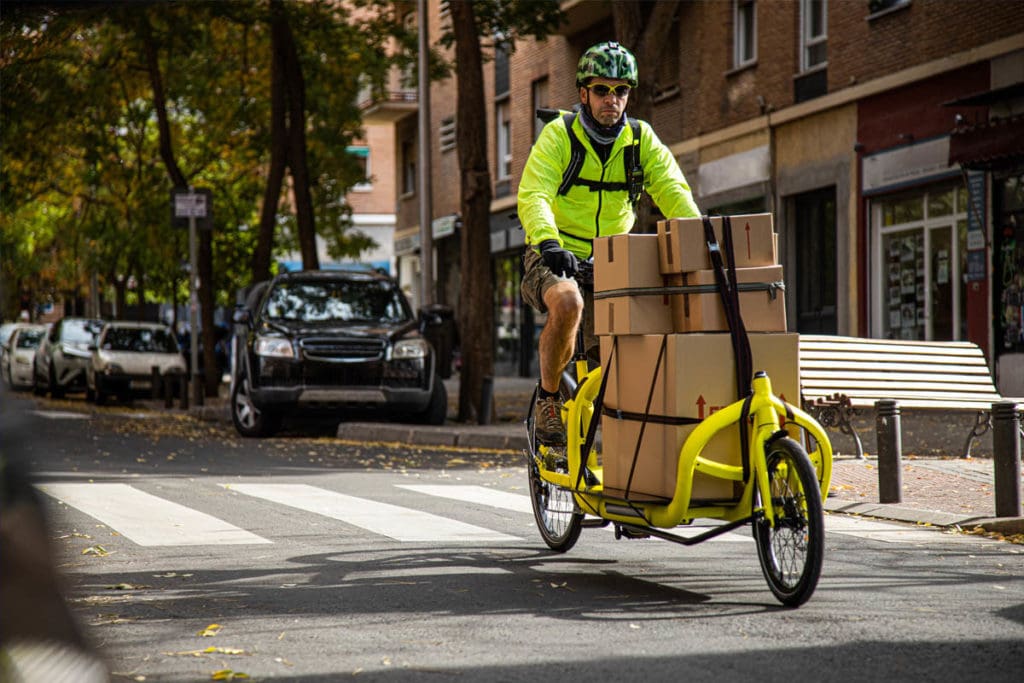Heavy Lifting Required for the Micromobility Revolution

Revolution is a word often bandied about … and, like many emotive terms, often contrary to its historic meaning.
It’s typically used to describe a sweeping change but, to be more faithful to its historic origins, a revolution is a “forcible overthrow” of a political or social system.
They, almost always, bring profound benefits for communities but require more than a gentle nudge to overcome the status quo, inertia and vested interests. They are not the trends or social movements borne purely from new inventions or human nature to seek social connection and, essentially, comfort, convenience, happiness.
Micromobility is a perfect example – because it is often labelled a transport and social revolution but also because, ultimately, it looks set to be a revolution in a literal sense.
The emerging technology of e-bikes has been instrumental in fostering a cycling boom.
In addition, the benefits of greater adoption of active transport is well demonstrated and generally accepted by all but those determined, for their various reasons, to deny the health, environmental, social and economic advantages.
However, in the case of the micromobility revolution, the industry and social must overcome particularly ingrained and inchallenging inertia.
That includes other industries that, on face value, would appear to lose from a move to active and less energy-dependent transports.
But, more importantly, it includes overcoming the perception that motorised transport is the most convenient and preferable way to travel if you can afford it.
Thinking Outside the Box
Most people in Australia and around the world are bound to the perceived comforts and autonomy of being encased within their own metal and plastic box … with their own microclimate and without perceived exertion.
Electric bikes and other forms of e-mobility have, to a large degree, overcome the obstacle of having to physically power micromobility vehicles and the reluctance of many to avoid exertion. (That’s despite the fact the alternatives are usually hours in the gym, some other contrived exercise, or the much more taxing and longer-lasting discomfort of obesity.)
However, micromobility still has a long way to go to overcome the adherence to cars because of their enclosed, temperature-controlled micro-climates and, more importantly, the notion they are safe (even though far more people are killed and seriously injured in motor vehicle collisions – and, yes, that is partly because there are more of them on the roads).
E-Cargo bikes, more than any other e-bike category, are hamstrung by these underlying attachments to motor vehicles because the role of cargo bikes, by their very nature, is functional. They’re generally not purchased for recreational or sporting purposes – although I’m sure there would be some examples. Their almost exclusive function is as a replacement for cars and vans.
This is where the more-than-a-gentle nudge is required.
E-bike retailers and micromobility advocates are well aware of the high-conversion rate once people properly experience e-bikes – particularly when they overcome the mental hurdle that cargo bikes can be a substitute for transporting children and other valuable items.
Tools for a Peaceful Revolution
That just leaves the question of how to get people over the threshold and have that experience.
Active transport advocates have done a mighty job selling the benefits of micromobility but they are restrained by the us versus them dynamic – the age-old, contrived and manipulated ‘bikes versus car’ antagonism.
The need for a ‘forceful overthrow’ is further impetus for government intervention – by providing infrastructure, financial incentives and regulation such as tighter vehicle emission controls, as well as education campaigns that galvanise public thought about the benefits of moving to active transport.
For commercial cargo bikes, public infrastructure such as strategically-placed last-mile delivery depots and bike-friendly routes able to accommodate light electric vehicles and other heavy cargo bikes will go a long way to making them a more attractive delivery option.
It’s much the same for personal cargo bikes, which will benefit from cycleways suited to larger bikes and parking facilities that amplify the conveniences of using e-mobility for shopping trips, transporting children and other commutes. However, rebates and other financial incentives will be particularly valuable for the smaller budgets of household, to persuade people to take the leap.
But first, to create an appetite to offer those incentives, there must be similar epiphanies in the outlooks of many politicians and senior bureaucrats. Micromobility’s infiltration of the recent National Electric Vehicle Summit looks likely to make significant headway in that regard.
It’s a multi-layered challenge.
Vive la révolution.
